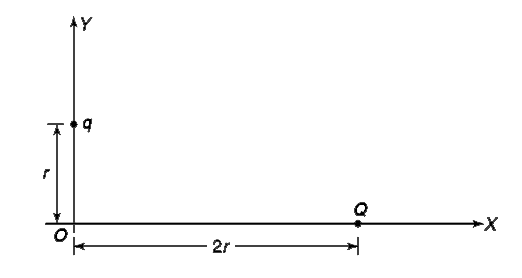Text Solution
Verified by Experts
The correct Answer is:
|
Topper's Solved these Questions
ELECTROSTATICS
ARIHANT|Exercise Level 2|77 VideosView PlaylistELECTROMAGNETIC INDUCTION
ARIHANT|Exercise Level 3|12 VideosView PlaylistGEOMETRICAL OPTICS
ARIHANT|Exercise Level 3|9 VideosView Playlist
Similar Questions
Explore conceptually related problems
Knowledge Check
A
B
C
D
Submit
A
B
C
D
Submit
A
B
C
D
Submit
Similar Questions
Explore conceptually related problems
ARIHANT-ELECTROSTATICS-Level 3
- Three small equally charged identical conducting balls are suspended f...
05:52
|
Play - Two charged particle of equal mass are constrained to move along X and...
03:41
|
Playing Now - Consider a uniformly charged spherical shell. Two cones having same se...
Text Solution
|
Play - Two point charges +q(1) and -q(2) are placed at A and B respectvely. A...
Text Solution
|
Play - There is a semi-infinite hollow cylindrical pipe (i.e. one end extends...
Text Solution
|
Play - Two equal insulating threads are placed parallel to each other. Separa...
Text Solution
|
Play - If coulomb's law were F=K(qQ)/(r^(3)), calculate the electric field du...
Text Solution
|
Play - A sermicircular ring of radius R carries a uniform linear charge of la...
Text Solution
|
Play - A small charged ball is in state of equilibrium at a height h above a ...
Text Solution
|
Play - In a certain region of space the electrostatic field depends only on t...
Text Solution
|
Play - A solid sphere of radius R has total charge Q. The charge is distribut...
07:14
|
Play - A ball of radius R carries a positive charge whose volume charge depe...
09:12
|
Play - A frustum is cut from a right circular cone. The two circular faces ha...
04:27
|
Play - The electric field in a region of space varies as E=(xhati+2yhatj)+3zh...
05:16
|
Play - A ball of radius R has a uniformly distributed charge Q. The surroundi...
Text Solution
|
Play - A uniform semicircular ring of radius R is in yz plane with its centre...
Text Solution
|
Play - A charge – Q is placed at some distance from a neutral conductor. Char...
Text Solution
|
Play - A soap bubble of radius R = 1 cm is charged with the maximum charge fo...
02:04
|
Play - A conducting sphere of radius R is cut into two equal halves which are...
03:44
|
Play - Surface tension of a soap solution is T. There is a soap bubble of rad...
04:52
|
Play
